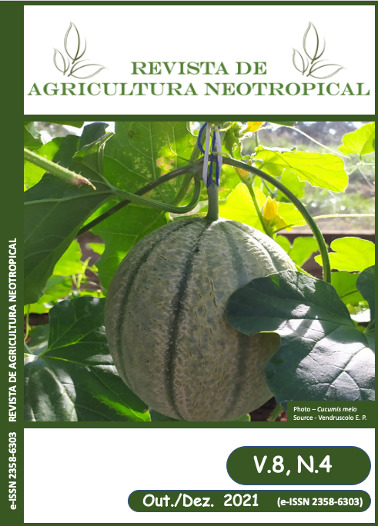HETEROTIC ESTIMATION AND ADAPTABILITY OF TOMATO HYBRIDS FOR FRUIT YIELD AND ITS RELATED TRAITS IN PAKISTAN.
DOI:
https://doi.org/10.32404/rean.v8i4.6582Keywords:
Heterosis, Heterobeltiosis, Hybrid vigorAbstract
Current study is emphasizing on the estimation of heterosis for different yield attributing traits and adaptability of tomato hybrids. It was performed in the research area of VCRP, HRI, NARC Islamabad during 2018-2019. Crossing was completed among six parents followed by line × tester. The analyzed data depicted significant differences (P ≤ 0.01) among all the characters.Due to desirable high negative heterotic values hybrids Peto-86 × Nagina and Riograndi × Roma were found suitable for breeding early maturing hybrids. For plant height maximum positive heterosis was observed in Riograndi × Nagina, for no. of cluster/plant in Naqeeb × Roma, for traits like flower cluster-1, fruit cluster-1, fruit length & width and single fruit weight in Naqeeb × Continental while for yield Riograndi × Continental showed maximum heterosis. Therefore among 9 tested hybrids Naqeeb × Continental was found to be highly preferable and recommended for utilization in different breeding programmes.
References
(I) Ahmad, S, Quarmruzzaman, A.K.M, Islam M.R. 2011. Estimation of heterosis in tomato (Solanum lycopersicum L.). Bangladesh Journal of Agricultural Research. 36(3): 521- 527. DOI: https://doi.org/10.3329/bjar.v36i3.9280
(II) Alam-Patwary M.M, Rahman, M.M, Ahmad, S, Miah M.A.K. Barua, H. 2013. Study of heterosis in heat tolerant tomato (Solanum lycopersicum) during summer. Bangladesh Journal of Agricultural Research.38(3): 531-544. DOI: https:// doi:10.3329/BJAR.V38I3.16980
(III) Bhatt, R.P, Biswas, V.R., Pandey, H.K., Verma, G.S., Narendra, K. 1998. Heterosis for vitamin C in tomato (Lycopersicon esculentum Mill). Indian Journal of Agricultural Sciences. 68: (1)176-178.
(IV) Bhatt, R.P, Biswas, V.R., Kumar, N. 2001. Heterosis, combining ability, genetics for vitamin C, total soluble solids and yield in tomato (Lycopersicon esculentum Mill) at 1700 m altitude. Journal of Agricultural Science.137: 71-75. DOI: https://doi.org/10.1017/S0021859601008838
(V) Chattopadhyay, A., Paul, A. 2012. Studies on heterosis for different fruit quality parameters in tomato. International Journal of Agriculture Environment Biotechnology.5(4): 405-410.
(VI) Chauhan, V.B.S, RajKumar Behera, T.K., Yadav, R.K. 2014. Studies on heterosis for yield and its attributing traits in tomato (Solanum lycopersicum L.). International Journal of Agriculture, environment & biotechnology. 7(1):95-100.
(VII) Dev, H, Rattan, R.S, Thakur, M.C. 1994. Heterosis in tomato. The Horticulture Journal.7 (2): 125-132.
(VIII) Garg, N., Cheema, D.S. 2010. Seeds of tomato (Solanum lycopersicum L.) hybrids incorporating rin, nor, or alc alleles exhibit heterosis for yield and quality traits. Journal of New Seeds.11:250-261. DOI: https://doi:10.1080/1522886X.2010499323
(IX) Gul, R, Rahman, H, Khalil, I.H., Shah, S.M.A, Ghafoor, A. 2010. Heterosis for flower and fruit traits in tomato (Lycopersicum esculentum Mill.) African Journal of Biotechnology.9(27):4144-4151. http://www.academicjournals.org/AJB
(X) GOP. GOVERNMENT OF PAKISTAN. 2019. Fruit, Vegetables and Condiments. Statistics of Pakistan. Ministry of National Food Security and Research (Economic Wing), Islamabad. http://www.mnfsr.gov.pk/pubDetails.aspx
(XI) Hedrick, U.P, Booth, N.O. 1907. Mendelian characters in tomato. Proceedings of American Society of Horticultural Sciences.5: (1)19-24.
(XII) Joshi, A. Thakur, M.C. 2003. Exploitation of heterosis for yield and yield contributing traits in tomato (Lycopersicon esculentum Mill.). Progressive Horticulture.3: (1) 564-68.
(XIII) Kumar, S, Kumar, R, Kumar, S., Singh, M., Banerjee, M.K., Rai, M. 2003. Hybrid seed production of solanaceous vegetables: A Practical Manual, II VR Technical Bulletin. 9: (1)1-34.
(XIV) Rai, M, Singh, A.K, Pan, R.S., Krishna, P.V.S.R. 2003. Combining ability of quality and yield in tomato (Lycopersicum esculentum Mill.). Vegetable Science. 30 (10): 21-24.
(XV) Ramzan, A., Khan, T.N., Nawab, N.N., Hina, A., Noor, T., Jellani, G. 2014. Estimation of genetic components in F1 hybrids and their parents in determinate tomato (Solanum lycopersicum L.). Journal of agricultural research.52(1): 65-75.
(XVI) Shull, G.H. 1914. Duplicate genes for capsule form in Bursa bursa-pastoris. Zeitscher. Induct. Abstamm. U. Verebungsl. 12:97–149.
(XVII) Steel, R.G.D., Torrie, J.H., Deekey, D.A. 1997.Principles and procedures of statistics: A biometrical approach, third ed. McGraw hill book Co. Inc. New York.
(XVIII) Sulodhani Devi, E., Singh, N.B., Devi, A.B., Singh, N.G., Laishram, G.M. 2005. Gene action for fruit yield and its components in tomato (Lycopersicon esculentum Mill.). Indian Journal of Genetics. 65(3): 221-222.
(XIX) Singh, N.B., Paul, A., Wani, S.H., Laishram, J.M. 2012. Heterosis Studies for Yield and its Components in Tomato (Solanum lycopersicum L.) under Valley Conditions of Manipur. International Journal of Life Sciences.1(3): 224-232.
(XX) Sunil, K.Y., Singh, B.K., Baranwal, D.K., Solankey, S.S. 2013. Genetic study of heterosis for yield and quality components in tomato (Solanum lycopersicum). African Journal of Agricultural Research.8(44): 5585-5591.
(XXI) Tamta, S and Singh, J.P. 2017. Heterosis in tomato for growth and yield traits, International Journal of Vegetable Science, https://doi.org/10.1080/19315260.2017.1407857.
Downloads
Published
How to Cite
Issue
Section
License
The authors retain the rights to the manuscripts and, therefore, are free to share, copy, distribute, perform and publicly communicate the work under the following conditions:
Acknowledge work credits in the manner specified by the author or licensor (but not in a way that suggests that you have their support or that they support their use of their work).
REVISTA DE AGRICULTURA NEOTROPICAL (ISSN 2358-6303) is under license https://creativecommons.org/licenses/by/4.0/
The State University of Mato Grosso do Sul, Sustainable Development Center of Bolsão Sul-Mato-grossense (CEDESU), of the University Unit of Cassilândia (UUC), preserves the patrimonial rights (copyright) of the published works and favors and allows their reuse under the license as mentioned above.
------------
The journal reserves the right to make normative, orthographic, and grammatical alterations in the originals, to maintain the cult standard of the language, respecting, however, the style of the authors.
Final proofs will be sent to the authors.
Published works become the property of the journal. The opinions expressed by the authors of the manuscripts are their sole responsibility.

